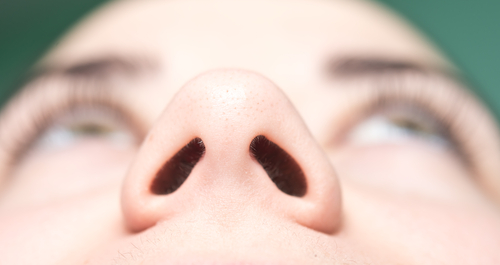 Most individuals assume that rhinoplasty is only used to correct cosmetic nasal issues. While rhinoplasty is commonly performed to reduce a nasal hump, rotate an upturned or downturned nasal tip, or alter the nostrils, aesthetics is only one aspect of nasal surgery. Rhinoplasty is also performed to correct functional nasal concerns. When rhinoplasty is performed for functional reasons, specialized techniques known as septoplasty or turbinectomy are used.
Most individuals assume that rhinoplasty is only used to correct cosmetic nasal issues. While rhinoplasty is commonly performed to reduce a nasal hump, rotate an upturned or downturned nasal tip, or alter the nostrils, aesthetics is only one aspect of nasal surgery. Rhinoplasty is also performed to correct functional nasal concerns. When rhinoplasty is performed for functional reasons, specialized techniques known as septoplasty or turbinectomy are used.
What Is the Difference?
Rhinoplasty is the all-encompassing term used for nasal surgery. In that, however, there are variations of septoplasty and turbinectomy. Septoplasty corrects deformities of the nasal septum; turbinectomy reduces or removes enlarged turbinates. These conditions may be present from birth or be the result of facial injury or trauma.
When Is a Septoplasty Performed?
A septoplasty is used for patients with a deviated septum. The septum is made up of bone and cartilage and separates your two nostrils. A deviated septum is a naturally-occurring or trauma-induced condition in which the septum is crooked, causing one side of the nasal passage to be larger than the other. While this may not seem significant, a severely deviated septum can lead to difficulties breathing and significant health concerns such as severe headaches, nosebleeds, repeated sinus infections, and problems sleeping. Although an estimated 80 percent of people suffer from some level of septal deviation, most are unaware that there is any problem. Unfortunately, for the remaining individuals, a septoplasty is one of the few therapeutic options.
When Is Turbinectomy Performed?
Turbinates are small, bony structures of the inside of your nose that humidify, filter, and warm the air that passes through the nostrils. While they are bone structures, they are surrounded by a mucous membrane which can become inflamed or swollen, making breathing difficult. Turbinectomy is nasal airway surgery. It works by reducing or removing the inflamed or enlarged turbinates to relieve congestion and allow for better airflow.
How Are These Procedures Performed?
Both septoplasty and turbinectomy are performed using the closed rhinoplasty technique. Therefore, all incisions are made on the inside of the nostrils, and there will be no external scar. Through these incisions, the septum will be straightened and aligned, or the turbinates will be surgically excised. These procedures will have little effect on the outward appearance of the nose, so additional steps would need to be added for patients who are also looking for a cosmetic change.
Following the septoplasty or turbinectomy, patients should keep their head elevated at all times, even when they are asleep. This will help with draining and blood circulation. Patients can expect to experience minor bruising and swelling; however, most patients find that cold compresses are enough to remedy the discomfort. Once the nose has healed, patients notice a significant improvement in their breathing.
If you are having problems breathing and you believe that your nasal structure is to blame, contact Dr. O’Toole by calling (626) 449-8910 or by filling out our online contact form.




